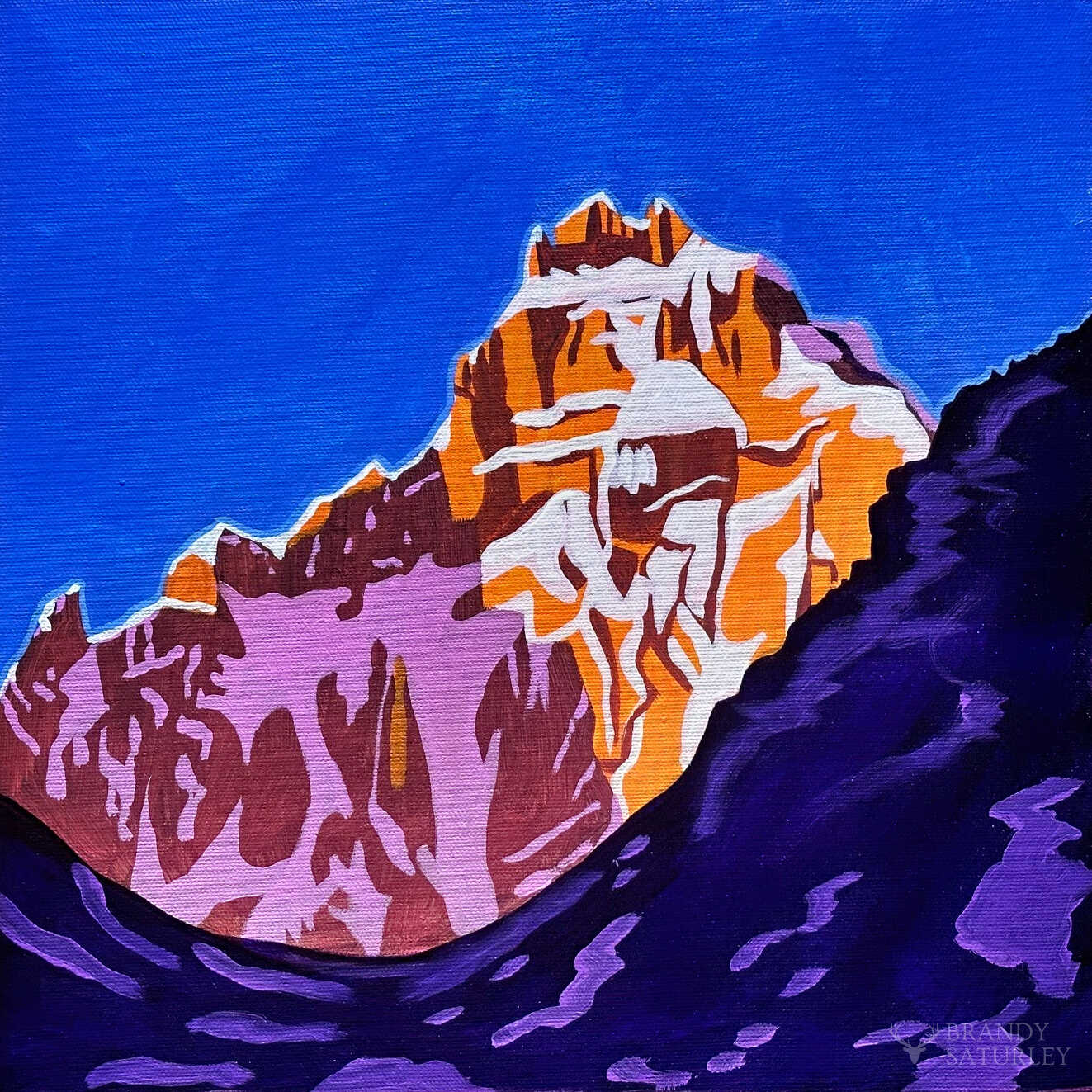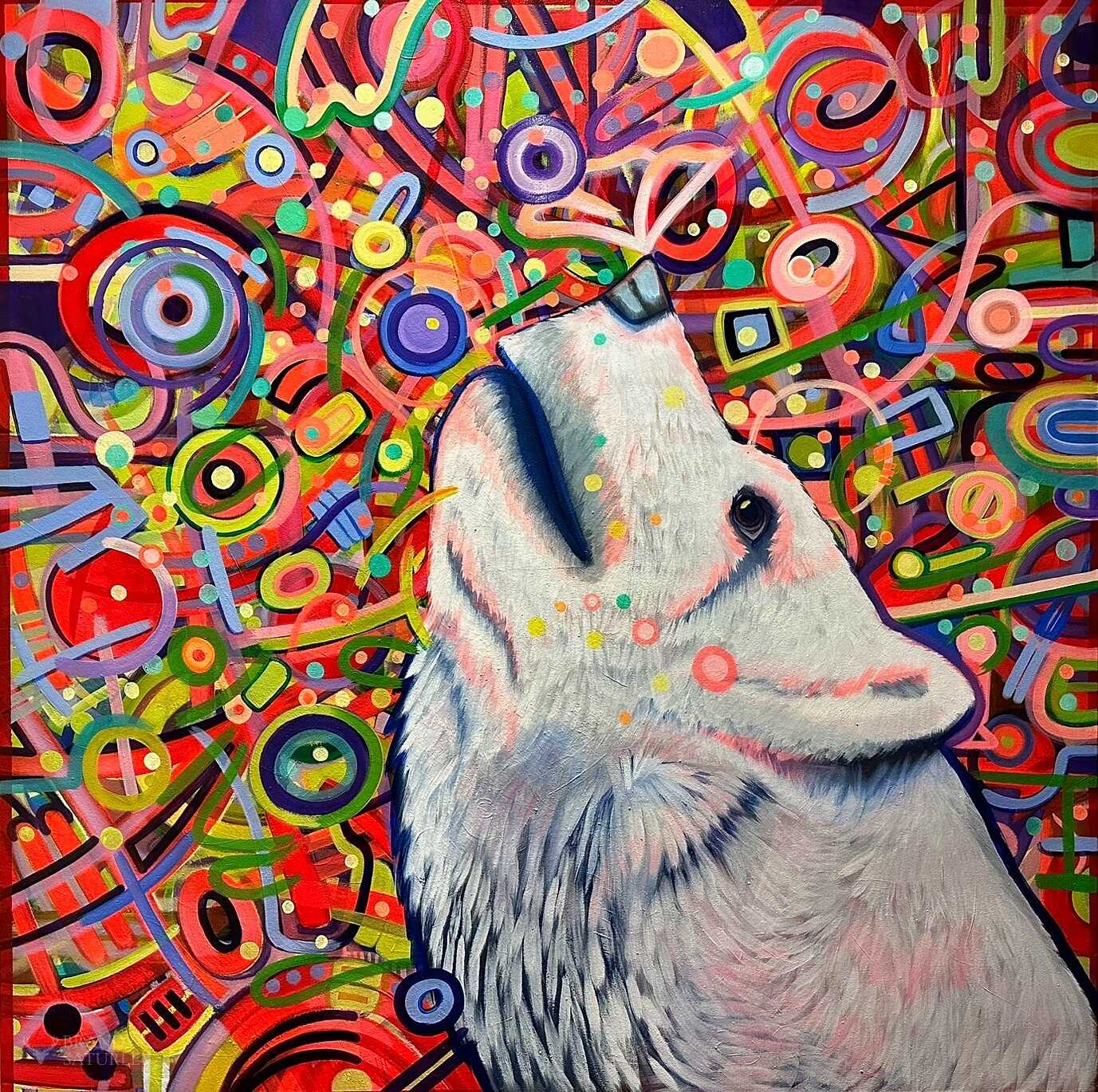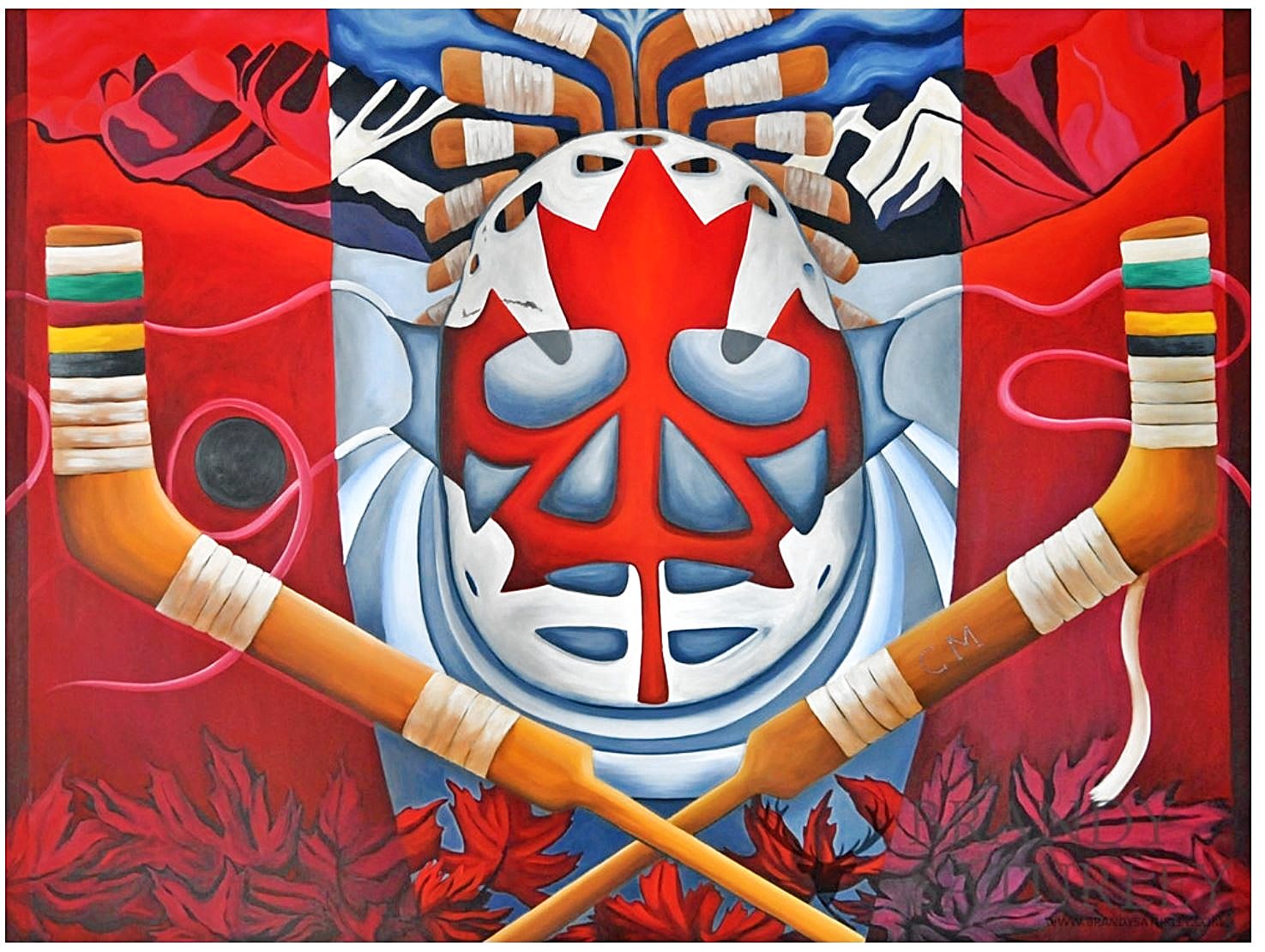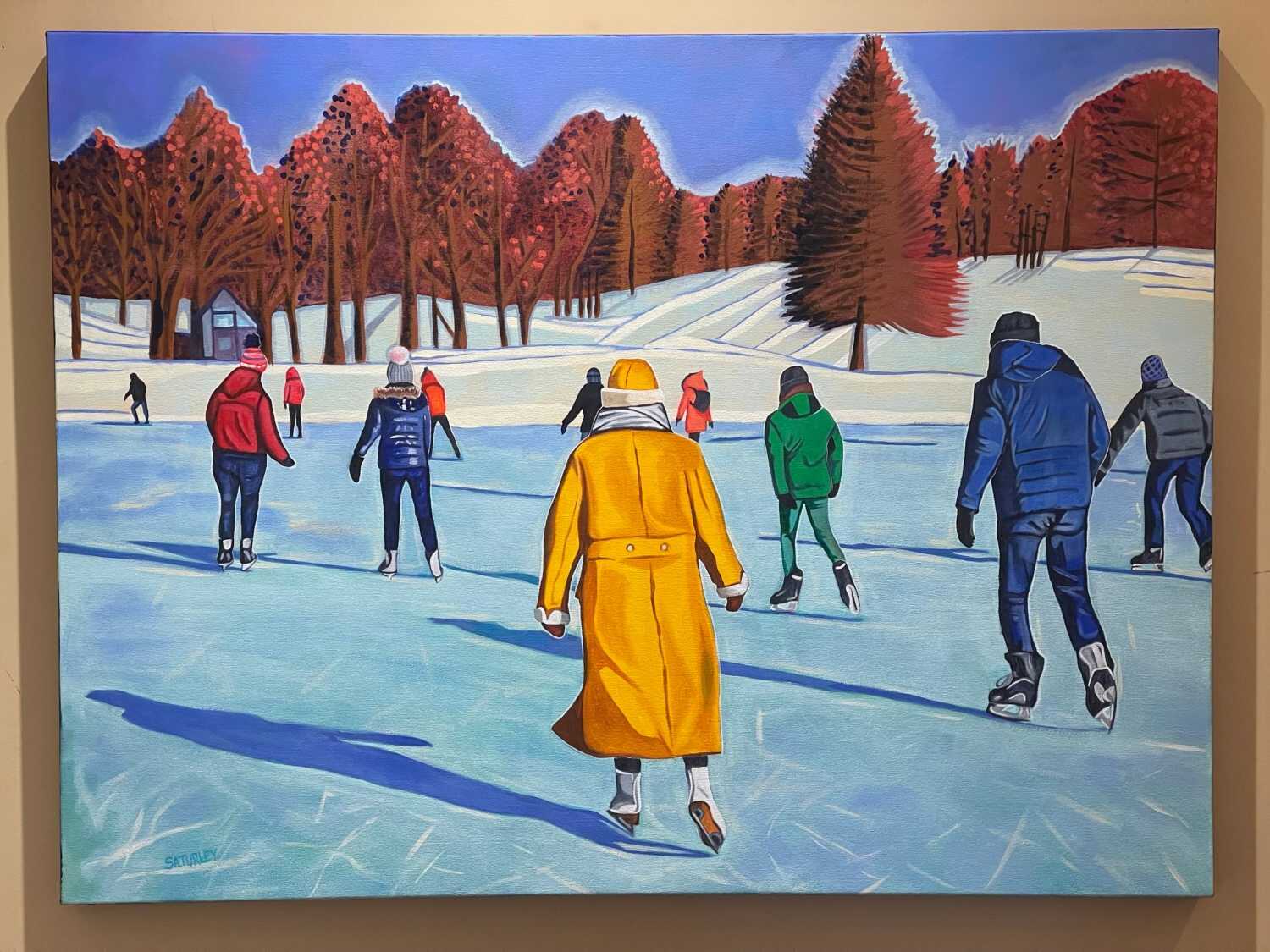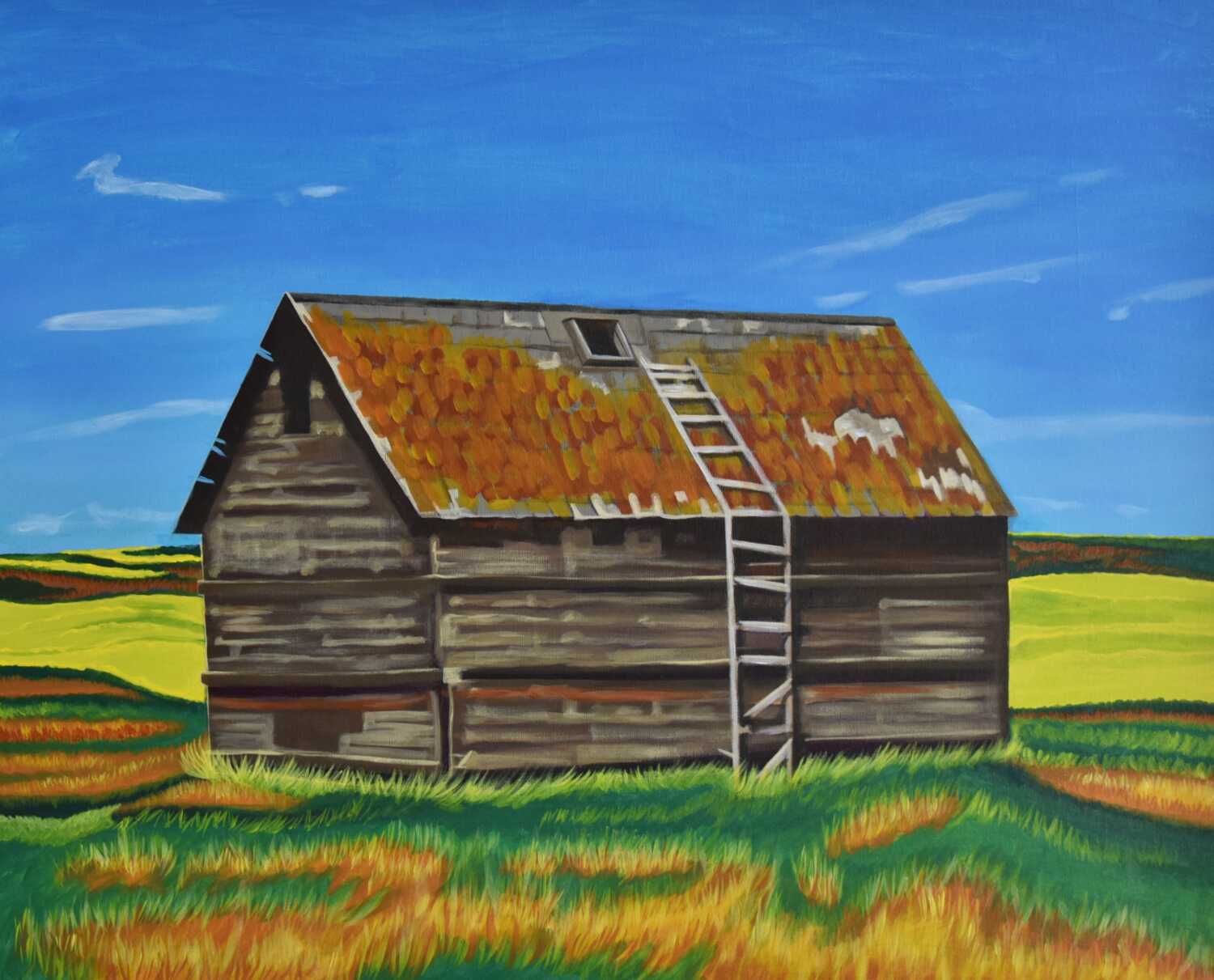What Makes Art Unique – Weird Art in Canada
Having recently returned from an art trip to Santa Fe, New Mexico I came home with a new appreciation for the quirky and even absurdities in Art. Weird art captivates our imagination by pushing boundaries and challenging norms. It reveals aspects of life and human creativity that we rarely encounter. From George Condo’s portraits to modern works like Damien Hirst’s pickled shark, these pieces provoke curiosity, intrigue, and sometimes even discomfort. So, in its eccentricity, weird art invites us to explore the unexpected and embrace the unconventional. Making weird art in Canada.

Sometimes referred to as ‘quirk’, ‘lowbrow’ or ‘funny’ – their have been many weird artworks that have captured our attention, for generations, and we are still talking about these works in the contemporary world. Whether it be ‘American Gothic’, The Scream or the melting clocks of Dali, weird art transcends genres and movements and can be found worldwide. Surreal, whimsical, or absurd art provides an escape from mundane reality. It invites us into fantastical worlds, sparking imagination.
In Canada, we are known as having our own quirky brand of humour, that is distinctly our own. Having travelled across the country over the past two decades soaking up the uniqueness that is Canada, I can attest to the weird wonderfulness that is Canada, but this is not reflected in most of our art galleries, which strikes me as odd. As the ‘Iconic Canuck’ I took my weird and quirky Canadianisms on the road and found an audience amongst those who appreciate laughing at themselves and their country. Underlying these quirky visual tales painted on canvas, a serious undertone about our place in the world and thoughts about the future of our country.

The “Canadianisms” series has toured in both Edmonton and Calgary, and has garnered the artist notoriety as the voice of Canadian Pop Art. In her most recent work, Saturley has turned once again to the landscape, never really having left. Her new, visionary paintings collage different, unexpected elements of Canadiana rendered in her characteristic pop aesthetic. They oscillate between a graphic realism used for Canada’s famous mountain peaks or views of forest lakes, and the abstractness of the colorful, even psychedelic backgrounds. The sincerity of their celebration keeps them from tripping over into kitsch. Instead they are otherworldly and transportive, playful and humorous. ~ Andrea Bell, for Whitehot Magazine

For me it is fun to look back at these weird and wonderful ideas that launched me into the Canadian Art Market and with galleries across the country. Some of my weird art serves as a critique of culture, politics, or consumerism. It highlights absurdities and prompts reflection on societal issues. In 2025, I will celebrate 15 years of painting stories of Canada on canvas, and I have a few things up my sleeve. For now, a trip back through these tongue in cheek narratives about a country known for it’s red maple leaf, Mountie’s, syrup of gold, hockey culture, Nanaimo bars and landscapes.
12 Paintings – Making Weird Art in Canada
From stories of the Oilers defeat and trade of Wayne Gretzky to the Stanley Cup. From tales of the Ukrainian experience to the people of the prairies, Canadian celebrities and the fans. These paintings tell quirky Canadian narratives of yesterday and today.

Death of a Rookie – 32×32, acrylic on canvas, 2012 An ode to the Oilers Steve Smith, in the style of Jacques Louis David, referencing The Death of Marat painting created in 1793. “Saturley’s Death of a Rookie, Rise of a Hero is a take on the political painting The Death of Marat by French painter Jacques-Louis David, 1793.

The Story of the Wayne Gretzky Trade – 48×36, acrylic on canvas, 2012 Brandy Saturley – Painting of The Oilers on the ice and Janet Jones in goal, with Gretzky transfixed by her gaze. A tale of the Wayne Gretzky trade to the LA Kings.

A Cup for Louise, 22.5×19, acrylic on canvas, 2013 – Brandy Saturley Imagine an afternoon sipping tea in the tearoom of the Fairmont Chateau Lake Louise, out of Canada’s most coveted cup? Having tea with Stanley at Lake Louise.

The Climb, 48×36, acrylic on canvas, 2015 – Brandy Saturley This piece speaks to the climb we face in all areas of life through referencing the long climb to achieving the Stanley Cup. The piece carries heavy symbolism with Lawren Harris-esque rocky mountains in the background.

The Eh Team, 36×36, acrylic on canvas, 2013 – Brandy Saturley Painting of a mountie with thumb up in a Fonzie-esque ‘eh’

Perogies in the Wind, 30×24, acrylic on canvas, 2012 – Brandy Saturley Painting of perogies hanging from a clothesline on the Canadian Prairie

Bieberscape 24×30, acrylic on canvas, 2011, Brandy Saturley Painting of Justin Beiber hairstyles that he became famous for early in his career. The hair acts and landscapes on the road through the Nevada desert.

Canada is Sweet & Salty, 24×30, acrylic on canvas, 2011 – Brandy Saturley Painting of a naked Pamela Anderson laying on top of a Mackintosh toffee bar at Peggy’s Cove with puffins.

A song for an Alter Ego, acrylic on canvas, 2011, Brandy Saturley Painting of Burton Cummings and his alter ego, on a trip across his catalogue. A Beatles’esque take on Burton’s inner thoughts.

A Punch Line and an Unknown, 36×48, acrylic on canvas, 2013 – Brandy Saturley A painting on an outdoor hockey rink of a group of hockey buddies wearing the ‘Habs’ famous line jersey numbers, along with a goal tender with a paper bag over his head.

Canadiens Gothic, 48×36, acrylic on canvas, 2014 – Brandy Saturley
The original painting the started the People of Canada Portrait Project in 2014, inspired by ‘American Gothic’. “American Gothic (1930) is a painting by American (Iowa) artist Grant Wood. The painting depicts a farmer and someone you may assume to be his wife standing in front of their house. The farmer is dressed simply and holding a pitch fork, the wife is dressed simply as well, adorned by an apron.
In reality, the people in this painting are not as they seem, they are models (artist’s sister and town dentist) that Wood selected to replicate what a typical person living in Iowa would look like. In American Gothic, Wood uses the house and its perspective owners as a satirical outlook on American culture at the time. Saturley’s Canadiens Gothic (from the People of Canada Portrait Project) has a similar setting to Wood’s American Gothic. Shown is a hockey player (Reg) in a Canadiens hockey jersey, holding a hockey stick. Beside him is, we assume, his wife (Penny) wearing a “Hoodie” or a “Bunny Hug” if you are from Saskatchewan. The figures are standing not in front of their home, but in front of a building titled FORUM, “the most storied building in hockey history” and home of the Montreal Canadiens hockey club. Unlike Wood’s American Gothic, the figures in Saturley’s Canadiens Gothic did pose together (selfie taken by Penny) and are a couple living in Manitoba. Replacing the pitch fork with a hockey stick, and replacing the simple but staunch black jacket with a hockey jersey, evokes a level of relaxation on one’s day off.This contrasts the work element (farming) with play (hockey); or, comparatively speaking, a way of life (farming) juxtaposed with the Canadian way of life (hockey). Penny’s attire also gives to the notion of comfort and does not attest to any domestic fortitude

Dreaming in the Colours of Eh, 36×48, acrylic on canvas, 2014 Asleep on an HBC point blanket, the green blanket like a field of emerald grass with red poppies falling from the sky. The poppies made from sheet music of ‘O Canada’. The woman sleeps peacefully with Canada Goose winter hat and ruby red boots, holding a green monopoly house in her right hand. The woman wearing a Vancouver Canucks jersey, but no pants. This piece was created as part of a series referencing the ‘Wizard of Oz’ and my journey home after exhibitions of work in Alberta. Somewhat surrealism, definitely symbolic, this piece tells many stories depending on the viewer. Acrylic painting on canvas with collage.
Remember, art’s impact is subjective, and what’s “weird” varies from person to person. Ultimately, weird art enriches our cultural landscape and invites us to explore the extraordinary.










